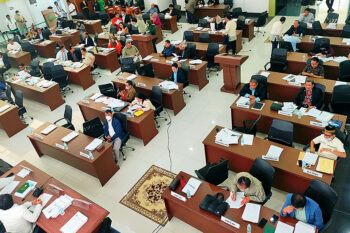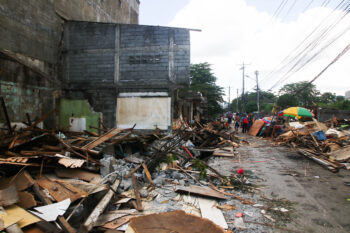
NAAWAN, Misamis Oriental (MindaNews / 03 July) – El Niño was officially here in the middle of June, says the Philippine Atmospheric, Geophysical and Astronomical Services Administration (Pagasa), meaning that things will be much hotter nowadays than usual. Pagasa says that the eastern part of the country will be the first to experience the dry spell while the western side will be wetter.
The El Niño phenomenon results from the warming of a large swatch of ocean surface in equatorial Pacific Ocean and its eastern side.
The natural phenomenon usually occurs every two to seven years, more frequently than its opposing climate phenomenon, La Niña, which occurs during the cool period in the temperature fluctuation of the ocean. But neither follows a schedule. El Niño dry spell typically lasts nine to 12 months, but can sometimes carry on for years, leaving in its wake drought and wildfires.
El Niño fuels tropical cyclones in the Pacific and boosts rainfall and flood risk the world over. La Niña, like El Niño, also unleashes rainstorms, floods, droughts and wildfires worldwide.
Already, the warming of the ocean resulting from climate change has brought about violent storms in recent years whose monstrous winds, rains and floods have devastated less developed countries bordering the western Pacific Ocean that includes the Philippines, destroying many lives and billions of dollars worth of properties, public infrastructure and agriculture.
The advent of El Niño exacerbates the effects of climate change and adds juice to the calamity it spawns.
Beyond preparing food packs for victims of tropical storms, it’s a guessing game what other preparations have the government in mind, especially in cushioning the impact of an impending long drought.
Often, wet months precede the El Niño long dry spell. It is advisable to harvest and store rainwater in tanks and water cisterns where possible.
In rural settings, particularly in agricultural areas, which do not have sufficient water channels, the government may dig deep wells and build water impoundments for farming communities. This will be of great help in meeting their basic water needs and in the care of farm animals and some heat-tolerant food crops during the dry months.
For food security, it is imperative that the government immediately deliver a water development program across the country in combating El Niño. The Build, Build, Build government program for roads, bridges, ports and airfields may be suspended for the meantime to refocus efforts in implementing a nationwide water program the soonest possible time.
(MindaViews is the opinion section of MindaNews. William R. Adan, Ph.D., is retired professor and former chancellor of Mindanao State University at Naawan, Misamis Oriental)







